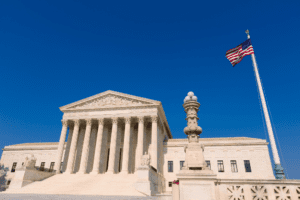 In Bruen, Justice Breyer filed a dissenting opinion. He was joined by Justices Sotomayor and Kagan.
In Bruen, Justice Breyer filed a dissenting opinion. He was joined by Justices Sotomayor and Kagan.
Since state constitutions can provide Second Amendment rights beyond those proved by the federal constitution, the dissent in cases like this often write to inform state courts on how they can reach a different conclusion than the federal Supreme Court majority. Here, the dissent is opposed to the extension of Second Amendment rights. Justice Breyer will therefore be inclined to advise state courts on how they can still approve gun-control measures that the Bruen majority found or would find unconstitutional under the federal constitution.
Justice Breyer wrote: In 2020, 45,222 Americans were killed by firearms. See Centers for Disease Control and Prevention, Fast Facts: Firearm Violence Prevention (last updated May 4, 2022) (CDC, Fast Facts), https://www.cdc.gov/violenceprevention/ firearms/fastfact.html. Since the start of this year (2022), there have been 277 reported mass shootings—an average of more than one per day. See Gun Violence Archive (last visited June 20, 2022), https://www.gunviolence archive.org. Gun violence has now surpassed motor vehicle crashes as the leading cause of death among children and adolescents. J. Goldstick, R. Cunningham, & P. Carter, Current Causes of Death in Children and Adolescents in the United States, 386 New England J. Med. 1955 (May 19, 2022) (Goldstick).
Many States have tried to address some of the dangers of gun violence just described by passing laws that limit, in various ways, who may purchase, carry, or use firearms of different kinds. The Court today severely burdens States’ efforts to do so. It invokes the Second Amendment to strike down a New York law regulating the public carriage of concealed handguns. In my view, that decision rests upon several serious mistakes. First, the Court decides this case on the basis of the pleadings, without the benefit of discovery or an evidentiary record. As a result, it may well rest its decision on a mistaken understanding of how New York’s law operates in practice. Second, the Court wrongly limits its analysis to focus nearly exclusively on history. It refuses to consider the government interests that justify a challenged gun regulation, regardless of how compelling those interests may be. The Constitution contains no such limitation, and neither do our precedents. Third, the Court itself demonstrates the practical problems with its history-only approach. In applying that approach to New York’s law, the Court fails to correctly identify and analyze the relevant historical facts.
